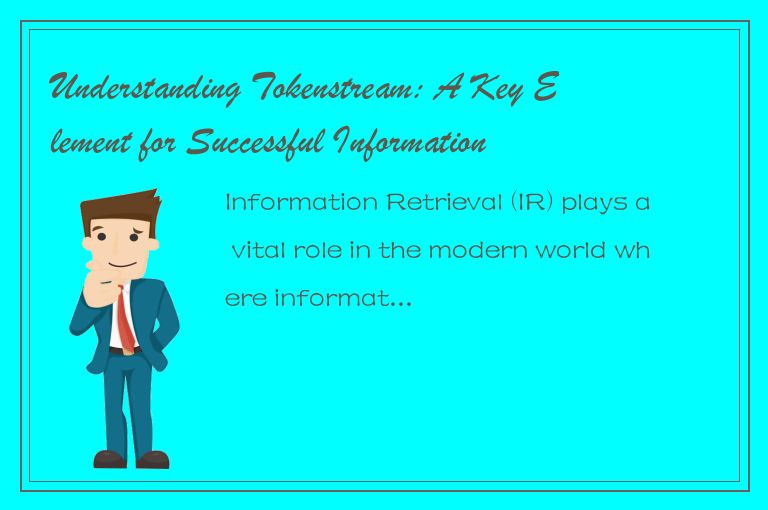Information Retrieval (IR) plays a vital role in the modern world where information is readily available but requires efficient and effective search mechanisms. IR systems use various techniques and algorithms to extract relevant information from large collections of data, and one of the most critical elements of these systems is “tokenstream.”

Tokenstream is a sequence of tokens, which are the smallest recognizable units in a text, such as words, numbers, or symbols. The role of tokenstream in IR systems is to identify and extract relevant information from text documents based on the search queries typed by users. Therefore, understanding the concept of tokenstream and its application is crucial for successful information retrieval.
Tokenization
Tokenization is the process of breaking a text into smaller units or tokens, such as words, phrases, or symbols. This process is the first step in a tokenstream and helps IR systems to extract meaningful information from text. To perform tokenization, IR systems use various techniques such as whitespace/token-based tokenization, regular expression tokenization, and character-based tokenization.
Whitespace/token-based tokenization involves separating tokens based on whitespace, punctuation, or other delimiters such as tabs and line feeds. This technique works well for most text documents but can have issues with special characters such as hyphens and apostrophes.
Regular expression tokenization, on the other hand, uses regular expressions to define rules for identifying tokens in text. This technique is more flexible than whitespace/token-based tokenization and can handle more complex text documents.
Character-based tokenization involves breaking text into tokens based on individual characters. This technique is rarely used in modern IR systems due to its limitations and high computational costs.
Token Filters
After tokenization, the resulting tokens in a tokenstream often need to be filtered to remove irrelevant or redundant tokens. Token filters are algorithms that take a stream of tokens as input and remove or modify certain tokens according to predefined rules. For example, stop-word filters remove common words such as “the,” “is,” and “are” that do not provide any useful information for the search.
Other types of token filters include stemming filters, synonym filters, and lowercasing filters. Stemming filters remove suffixes from tokens to allow different forms of a word (such as “run,” “running,” and “ran”) to match during a search.
Synonym filters identify words that have the same meaning and replace them with a standard synonym to improve search accuracy. For example, “bike” and “bicycle” are treated as synonyms and replaced with one word during the search.
Lowercasing filters convert all tokens to lowercase. This helps to ensure that searches do not miss relevant information due to capitalization.
Tokenstream in IR Systems
Tokenstream plays a critical role in IR systems by enabling accurate and efficient information retrieval. IR systems use tokenstream to identify and extract relevant information from text documents, which makes searching for data more effective and enables faster decision-making.
In IR systems, tokenstream works as follows: When a user enters a search query, the IR system tokenizes the query and then compares the resulting tokens against the tokenstream of each document in the database. If the tokens in the search query match the tokens in the document’s tokenstream, the document is considered relevant and returned as a result.
For example, suppose a user enters the search query “best pizza in New York”. The IR system tokenizes this query into individual tokens such as “best,” “pizza,” “in,” and “New York.” The system then compares these tokens against the tokenstream of the documents in the database that contains information about pizza restaurants in New York. If a document contains the tokens “best,” “pizza,” “New York,” and “restaurant,” it will be considered relevant and returned as a result.
Conclusion
Tokenstream is a critical element in modern IR systems that enables efficient and effective information retrieval. It involves breaking text into smaller units or tokens, filtering them, and comparing them against search queries to extract relevant information. Understanding the concept of tokenstream and how it is used in IR systems is crucial for successful information retrieval. By using tokenstream, IR systems can quickly identify and extract relevant data from large collections of documents, making it easier for users to find the information they need and make informed decisions.




 QQ客服专员
QQ客服专员 电话客服专员
电话客服专员